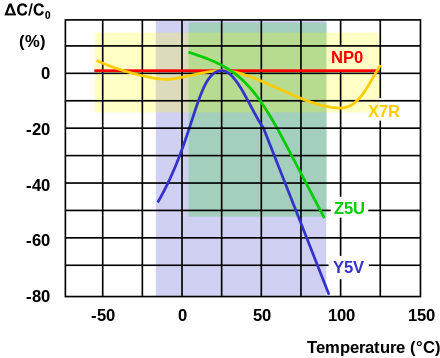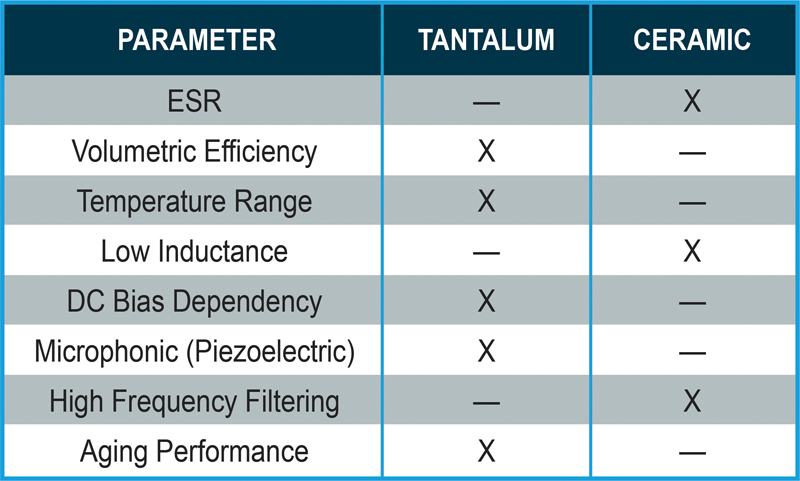Class 1 ceramic capacitors with high stability and low losses compensating the influence of temperature in resonant circuit application.
Ceramic capacitor temperature stability.
In capacitors with polar electrolytes used in high voltage capacitors made by epcos the chemical interaction between electrolyte and oxide dominates the blocking behavior of the dielectric.
Only available as leaded components.
A typical performance for the change of capacitance with temperature is 22 to 56 over a range of 10 c to 55 c.
Ceramic capacitors are divided into two application classes.
Class 1 ceramic capacitors offer high stability and low losses for resonant circuit applications.
Smaller ceramic capacitors can have a nominal value as low as one pico farad 1pf while larger electrolytic s can have a nominal capacitance value of up to one farad 1f.
Class 3 ceramic capacitors offer higher volumetric efficiency than the class 2 ceramic capacitors but their temperature stability is not nearly so good.
The multilayer ceramic capacitors mlccs are key components used in every electronic equipment to serve many functions such as filtering dc blocking coupling decoupling and so on 1 2 in recent years with the rapid development of electric vehicles high speed aircrafts and spacecrafts there is an urgent need for ultra high temperature multilayer ceramic capacitors uht mlccs to.
Class 1 and class 2.
Characteristics precision and tolerances.
The storage temperature for these capacitors should be as low as possible and certainly below 25 c.
For instance ceramic capacitors made using x5r dielectric materials have an operating temperature range of 55 c to 85 c with an allowable variation in capacitance of 15 over that range and exhibit non linear capacitance value stability over that range.
Class 2 ceramic capacitors offer high volumetric efficiency for buffer by pass and coupling applications.
The two most common types are multi layer ceramic capacitors and ceramic disc capacitors.
The capacitance of a capacitor can change value with the circuit frequency hz y with the ambient temperature.
Nonetheless further increase of rated temperature is proving to be a real challenge due to exceeding.
Class 1 ceramic capacitors are used where high stability and low losses are required.




























